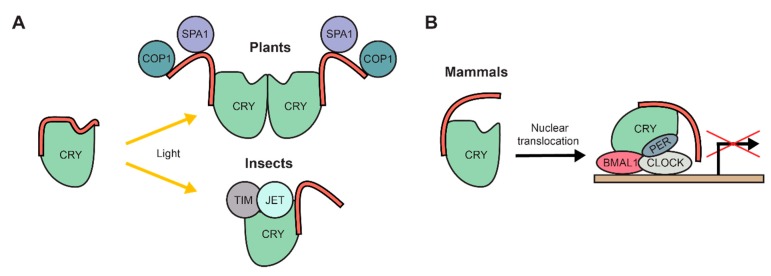Figure 3.
The intrinsically disordered C-terminal extension of cryptochromes (CRYs) has diverse functions. (A) Upon light perception through a photolyase homology region (PHR), the C-terminal extension (red) is released from the PHR and acquires an exposed conformation. In plants, the C-terminal extension directly binds to partner proteins, e.g. COP1 and SPA1. In insects it is not involved in binding to proteins, instead the PHR binds to partner proteins, e.g. TIM and JET. (B) In mammals, the C-terminal extension is responsible for translocation of CRYs to the nucleus, where they are involved in regulating gene expression as part of the central circadian clock regulation complex together with proteins like BMAL1, CLOCK and PER.

